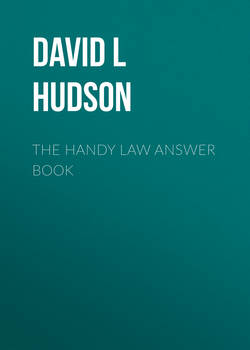Читать книгу The Handy Law Answer Book - David L Hudson - Страница 59
На сайте Литреса книга снята с продажи.
THE EXECUTIVE BRANCH Were all the Founders convinced that the executive branch should consist of one person?
ОглавлениеNo, the Founders were divided on the composition of the executive. Much of the debate centered on whether the executive branch should consist of a single person or an executive committee. Some delegates feared that creating a single-person executive would be dangerous and lead to a monarch, such as George III. George III was the King of Great Britain who taxed the colonies and battled them during the Revolutionary War. Above all else, the majority of the Framers wished to avoid creating a king. Most of the delegates assumed that George Washington would become the country’s chief executive.
For this reason, James Madison wrote to Thomas Jefferson that it was “peculiarly embarrassing” to have the delegates arguing about whether they could trust a single executive. It was “embarrassing,” because Washington sat quietly while this discussion proceeded.
George Mason from Virginia proposed that there be a three-person executive branch. He said that one individual would come from the North, one from the South, and the other from the middle states.
The delegates disagreed about whether to create a strong independent executive or an executive that would be far less powerful than Congress. The delegates also changed their positions on the length of the president’s term. A committee originally proposed that the president would be elected by the legislature for one seven-year term.
President Gerald R. Ford meets with AFL-CIO President George Meany in the Oval Office. The Founding Fathers decided that the executive branch would consist of just one person, the president (iStock).
Finally, on August 31, another committee—the so-called Committee of Eleven—considered an earlier proposal by delegate James Wilson from Pennsylvania that a group of people called electors would choose the president. Under this system, each state would have the number of electors “equal to the whole number of senators and representatives of the House of Representatives.” This proposal was another compromise measure between the larger and smaller states. In a direct popular election, the votes in the larger states would dominate. In an electoral college system, the larger states would have more electors but the smaller states would still have a significant role.
On September 6, the delegates approved of the electoral college as the way to select the president. The electors would meet in the various state capitals and vote for two persons. The person with the highest number of electoral votes would be president. The person with the second highest number of votes would be vice president. The House of Representatives would select the president in case of a tie.
The Founders did not foresee that the two highest vote getters might be political opposites. It would take the Twelfth Amendment to the Constitution to resolve this problem.
